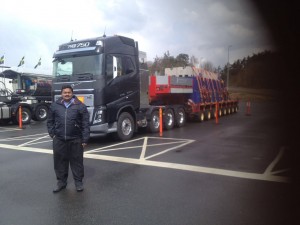Frugal engineering attributes are becoming more and more visible as new commercial vehicles are introduced.
Rentals rose in February on trunk routes. The rise was linked to an increase in diesel prices, which inched up as international crude prices rose due to the depreciating US Dollar. When the fuel prices started going down, the Government chose to hike taxes. The benefit of low crude prices never made it to the Indian public. Further rise in crude prices cannot be ruled out, and for fleet operators who could pass on the rise in rentals smoothly, the pressure on operating margins is likely to go up even if slightly. Chances of a reduction in excise duty are next to nil. With the demand for yet another cut in interest rate gaining force on the back of an easing inflation, it may be necessary to understand that the efforts taken by manufacturers to introduce efficient, comfortable and cost competitive commercial vehicles is part of a race to meet stringent emission norms among others.
Growing on a small base, the commercial vehicle industry continues to be under pressure. It is not surprising to witness manufacturers exert an export thrust hence. The domestic market continues to be replacement driven; LCVs look like they are out of the woods. Demand for higher tonnage vehicles is growing. Frugal engineering attributes are becoming more and more visible as new commercial vehicles are introduced. Enhancing comfort, efficiency and performance, they are finding a way into the most unexpected places – seats with anti-bacterial fabric, lower step height for easier ingress and egress, and a quest to attain Euro 6 emission compliance at far less than what it took in markets like Europe. The silent revolution in the Indian commercial vehicle industry continues. It is also drawing the attention of the world as new ways to deal with challenges are sought.
Bhushan Mhapralkar
b.mhapralkar@nextgenpublishing.net
Commercial Vehicle Magazine
@cvmagazine




















